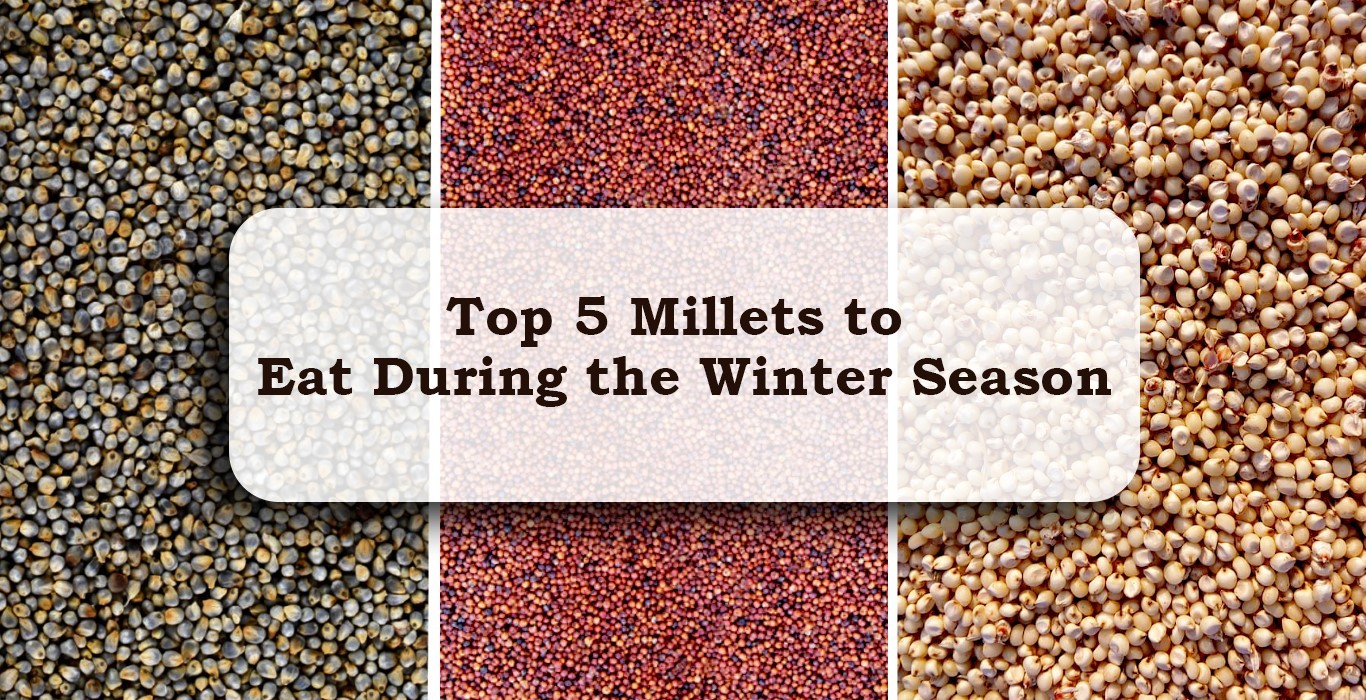You must have heard some top nutritionists talk about eating local and seasonal. This is not just a fad but has its roots in some age-old wisdom. Do you remember your naani asking you to eat dry fruits ladoo or millet rotis in winter? It is always suggested that having seasonal food is beneficial for the body as seasonal produce comes with a lot of nutrition that the body needs to fight the illnesses that come with a change of season.
Seasonal and local is the best, and that is for multiple reasons, one as the seasonal produce is fresh it has the maximum nutrition. Another reason is that as the local produce reaches the market faster, it retains higher nutrition as compared to exotic products that need to be shipped across the globe to contact you. Millets are locally grown in India and are known to have multiple health benefits.
Millets in Winters
In winter, it is essential to heal the body from within and keep the body warm. Winters are the time when your body builds its immunity and you can help by including food like Indian grains, spices, millets, and traditional recipes like winter ladoo, dry fruit ladoo, and most importantly, winter millets to your diet. Indian millets are one of the healthiest and the oldest grains, mainly consumed during winter.
The top 5 Healthy winter millets are Jowar which is Sorghum, Makai, which is Maize, Bajra aka Pearl millet, Kangini aka foxtail millet, and Ragi, which is finger millet.
Let’s talk about each millet in details:
Jowar aka sorghum
All the millets are a powerhouse of Nutrition. Jowar specifically is rich in the following –
- Calcium,
- Vitamin B,
- High in dietary fiber,
- Rich in essential minerals like iron and phosphorus.
- Loaded with antioxidants.
How to use it :
Jowar Flour or jowar millet grain can be used in multiple recipes like paratha, roti, khakra, cookies, bread, cakes, khichdi, salad, idli, dosa, pancakes, etc.
Bajara aka Pearl millet :
It is the best grain to consume in winters. It is easily available in the Indian kitchen and is very economical. Bajra is rich in –
- Protein
- Good source of omega 3
- It is a good source of fiber
How to use :
Popular Bajra recipes include Khichdi, bajara Roti, Bajra rotla, Bajra paratha, crepes, raab, and vegetable bajara soup. Bajra keeps the body warm, hence it is consumed during winters.
Maize aka makai :
Makai which is maize is also known as corn. This is one of the most popular winter millets with a particular fan following, especially in winters.
- Makai is rich in vitamin B, and E
- High in fiber, good for digestion.
How to use :
You can make soup, cookies, breadsticks, roti, and paratha out of it. Makai de roti and Sarsso da saag are a staples in many parts of the country during winters.
Foxtail millet aka kaagni :
- Foxtel millet is a rich source of protein.
- A good antioxidant.
- Rich in iron and copper.
- It’s the best substitute for rice and a good option for weight watchers.
- It helps you to boost your immunity.
How to use :
You can make porridge, upma, kheer, khichdi, Idli, and Dosa using foxtail millets.
Ragi aka finger millet :
Ragi is known as nachni too. It is another popular winter millet that is easily available and rich in calcium.
- It also helps people suffering from depression, anxiety, and insomnia.
- It helps to increase the hemoglobin when included in the right way and in the right proportion in your diet.
- Ragi has been a millet that can be had throughout the year, especially in winter.
How to use :
You can make ragi roti, ragi porridge, ragi soup, ragi dosa, idli, mudde, ragi malt, etc.
This was our list of must-have winter millets to be included in your grocery list.
Winters are a time when the body slows down. The day is shorter and hence the body has limited physical activity. We burn less fat this season. It is important to make some changes to our diet in winter to improve gut health and keep our bodies healthy. Millets offer the variation that our body needs during winters, along with the nutrition and immunity booster elements, to keep us healthy. Include millets in your diet this winter and experience the health benefits and warmth that your body will thank you for.







